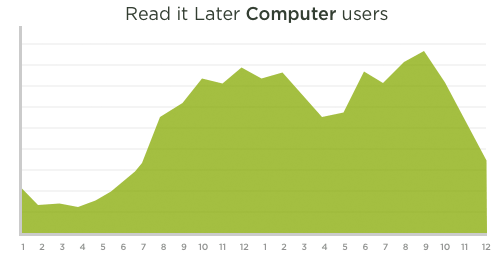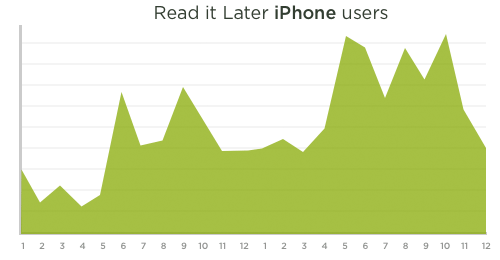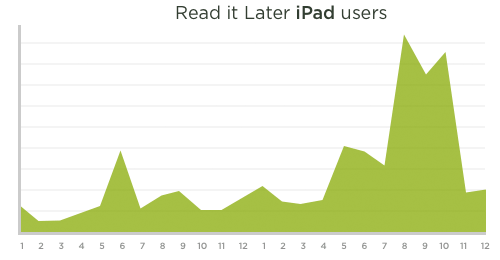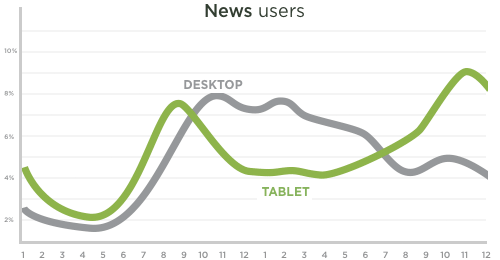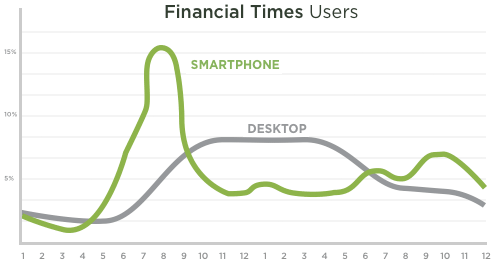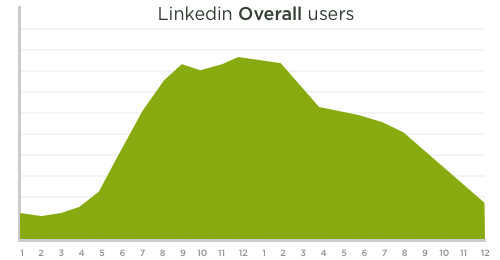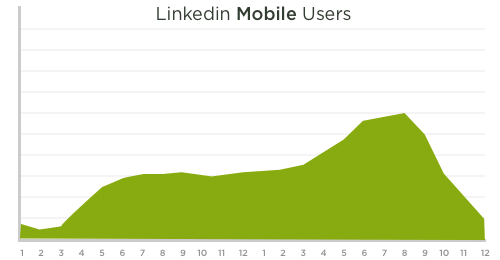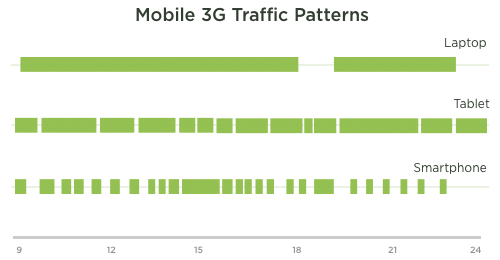What happens when you look at use of the same digital content or service on different devices? Quite consistently people's behavior changes significantly. To illustrate here's several examples of the same use case on different devices.
This graph shows the number of articles read each hour by Read It Later users on their computer. The number of reads grows more sharply until noon and then begins to fall off until after work (6PM – 9PM).
The second graph shows the number of articles read by iPhone users each hour. There's four major peaks: 6am (breakfast); 9am (the morning commute and start of workday); 5pm – 6pm (end of the work day and the commute home); 8pm – 10pm (couch time, prime time, bed time).
As you can see there's quite a difference between how people read on computers and on mobile devices. The difference is even more significant when you look at when the same articles are read on the iPad.
iPad readers are much more active in the evening from 7-11pm. Once again, the same use case (reading saved articles) results in different behavior with a different device.
The same distinction between tablets and desktops can be seen in weekday consumption of news content by hour of the day. The use of computers is heaviest during work hours while tablet use once again peaks in the late evening.
Comparing a news site's traffic between smartphones and desktop devices also shows a big difference. In this case, the Financial time's Web site sees a higher percent of mobile devices in the morning and a dominance of desktop devices during the day.
The opposite pattern seems to be true on the social networking site, LinkedIn. LinkedIn's mobile traffic increases towards the end of the day. Likely when people are leaving work disgruntled and searching for a new job!
Even without a common service, different devices lead to different behaviors. Looking at how long a random laptop, tablet, or smartphone is connected to a 3G network shows a distinction between the number and length of online sessions.
As these examples illustrate, the type of device clearly influences when people use distinct types of content and services. It's going to be really interesting to see how these behaviors change as networked consumer devices continue to evolve.
The Role of Environment
A number of folks have suggested that this data indicates different environments are responsible for the use of different devices. For example, the early morning spike of mobile devices on the Financial Times is a result of people reading on their commute in to work and the evening peak of tablet use for news sites is people reading at home. While environment can certainly play a role in device selection and use, there's no location data included in these examples. As a result, these explanations are inferred.
People may be reading the Financial Times on mobile during their morning commute or they could be reading it first thing in the morning because their mobile is on their bedside table when they wake up. Looking at this data, we can't say for sure. The only thing we can tell for certain is that different devices are being used at different times throughout the day. Environment may be the primary reason for that but this data doesn't definitively tell us that.
